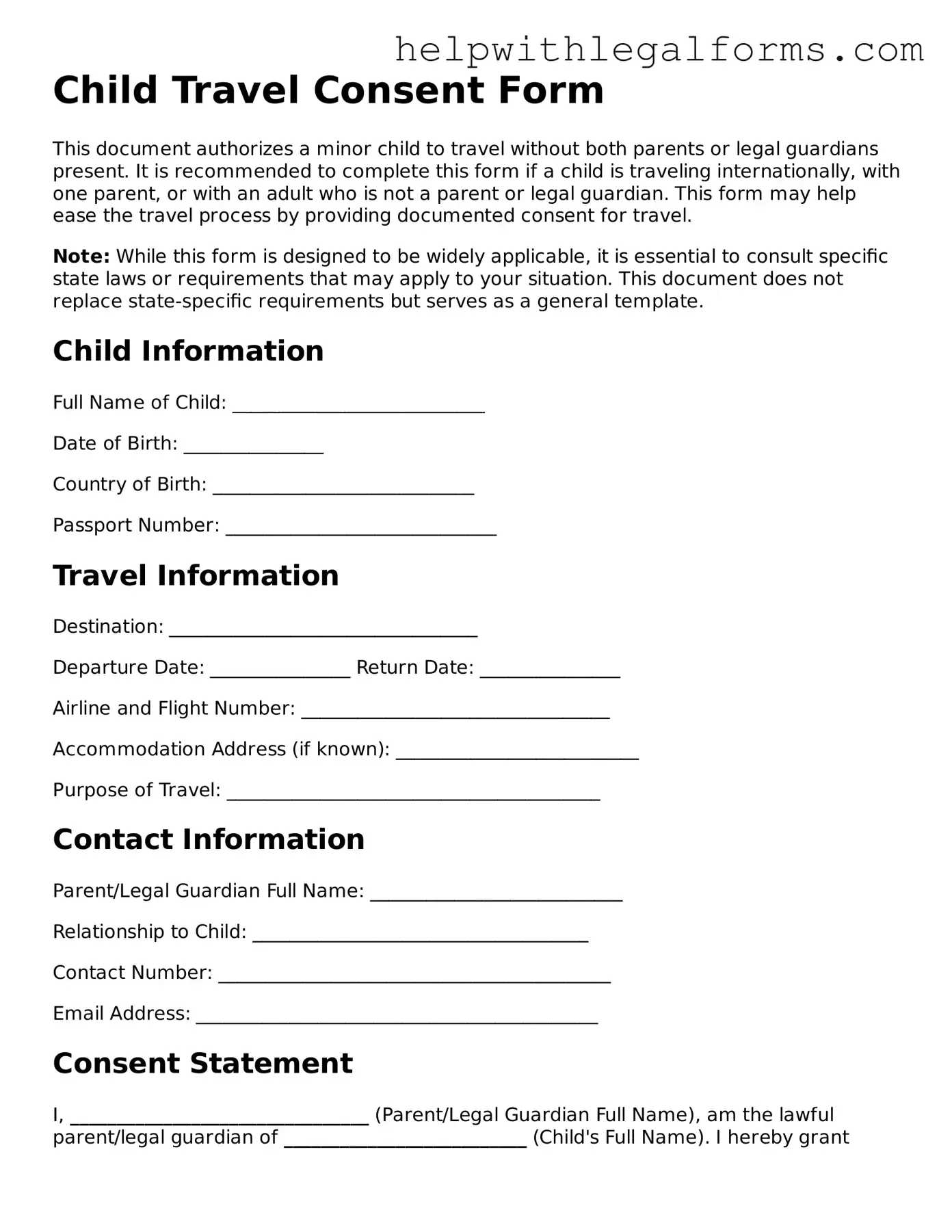Child Travel Consent Form
This document authorizes a minor child to travel without both parents or legal guardians present. It is recommended to complete this form if a child is traveling internationally, with one parent, or with an adult who is not a parent or legal guardian. This form may help ease the travel process by providing documented consent for travel.
Note: While this form is designed to be widely applicable, it is essential to consult specific state laws or requirements that may apply to your situation. This document does not replace state-specific requirements but serves as a general template.
Child Information
Full Name of Child: ___________________________
Date of Birth: _______________
Country of Birth: ____________________________
Passport Number: _____________________________
Travel Information
Destination: _________________________________
Departure Date: _______________ Return Date: _______________
Airline and Flight Number: _________________________________
Accommodation Address (if known): __________________________
Purpose of Travel: ________________________________________
Contact Information
Parent/Legal Guardian Full Name: ___________________________
Relationship to Child: ____________________________________
Contact Number: __________________________________________
Email Address: ___________________________________________
Consent Statement
I, ________________________________ (Parent/Legal Guardian Full Name), am the lawful parent/legal guardian of __________________________ (Child's Full Name). I hereby grant permission for my child to travel as described in this document. I affirm that I have the legal authority to provide this consent.
Emergency Information
- Emergency Contact Name: ___________________________
- Relationship to Child: _____________________________
- Contact Number: _________________________________
- Alternate Contact Number: _________________________
Signature
Parent/Legal Guardian Signature: ___________________________
Date: _______________
Witness (Optional) Signature: ______________________________
Date: _______________
Notarization (If required)
This section to be completed by a notary public if notarization is required by the airline, destination, or as an extra precaution.
State of _______________
County of ______________
On this day, _______________ of _______________, 20____, before me, ___________________________________ (Notary's name), personally appeared _________________________________(Parent/Legal Guardian's name), known to me (or satisfactorily proven) to be the person whose name is subscribed to the within instrument, and acknowledged that he/she executed the same for the purposes therein contained.
In witness whereof, I hereunto set my hand and official seal.
Notary Public Signature: _____________________________
My Commission Expires: _______________
